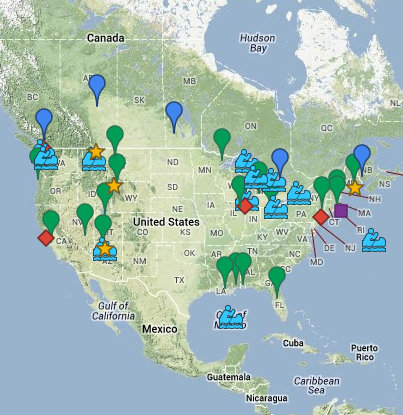Wednesday, October 31, 2012
Keystone
I suspect this short stretch of beach just east of Keystone Harbor wins the award for most rapid, sustained, long term erosion rate on Puget Sound. But there's a catch!
We don't know a whole lot about erosion rates on Puget Sound, but we know that one foot per year is unusually high, at least over any significant period of time, and such rates are probably limited to the most exposed sites along the Strait or the toes of big, recently reactivated, deep-seated landslides.
Where erosion rates are unusually high, we usually find out that it is an area that was historically filled. You pile dirt out into the ocean and, of course, it goes away quickly.
This particular gravel bank erodes 5-10 feet per year, every year, and has done so for five decades. Every five years or so, the Corps dredges gravel from the mouth of Keystone Harbor (so the ferry doesn't run aground) and places it on the adjacent beach - a classic, albeit fairly small, bypass operation. The pile of material forms a steep, rapidly eroding bluff that advances rapidly on the parking lot for five years, at which time the Corps comes back, dredges again, and the whole process repeats.
AERIAL VIEW
The simple version of the sediment transport story is that drift is from north to south, so that gravel eroded from the bluffs farther north on the island gets moved south around Admiralty Head and then east past Keystone to accumulate on Keystone Spit (the large barrier that fronts Crockett Lake). This is why the bypass notion works. On the other hand, storms here are still largely form the south, so why isn't the drift the other direction? This issue arises elsewhere on the west side of Whidbey, too. My preferred explanation, but one that is purely speculative, is that longer period waves from the north, down Admiralty Inlet, are more effective at moving sediment than the choppier waves that come more frequently from the south.
Labels:
puget sound,
salish sea,
washington,
whidbey
Location:
Keystone
Subscribe to:
Post Comments (Atom)





1 comment:
It has been fun to watch the recent shoreline process at this site since dredging this past summer. From a shoreline process perspective this is high speed action! Having watched the northwest approaching waves on the west shore of Whidbey, I think what you postulate is very true. The waves from the northwest can be huge.
Post a Comment